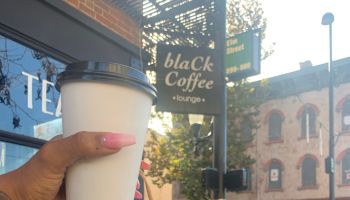As a result of redistricting efforts in New York, and rapid growth in Harlem’s Latino population, which is now larger than the black population, this community’s black residents may no longer have a leading voice in their district. Congressman Charlie Rangel, who represents the district, was able to withstand an ethics scandal that threatened his seat. But a rising Latino population could mean the end to black power in Harlem.
Changing demographics throughout the nation, combined with retiring lawmakers and redistricting, have members of the Congressional Black Caucus concerned that they will lose long-held black seats. While much attention has been paid to gentrification and its consequences for historically African-American enclaves, there has been little discussion of the impact of the nation’s Latino population, now the largest minority group in the U.S.
According to the 2010 census, Latinos increased from 12.5 percent of the U.S. population in 2000 to 16.3 percent in 2010. Blacks only increased from 12.3 percent to 12.6 percent during the same time period. Now, 50.5 million Hispanic-Americans outnumber 38.9 million African-Americans.
And in the New York metropolitan area, blacks, Latinos and Asians now make up a majority of the more than 19 million people in the area.
For the first time, the Hispanic poverty rate (28.2 percent) has surpassed the black rate (23.4 percent) nationwide. This turn of events is due to lower participation of immigrant groups and non-English speakers in government assistance programs. Black urban areas are emptying out and impoverished Latino groups are moving in.
According to the Joint Center for Political and Economic Studies, the “ghetto” as we know it is changing from black to Hispanic. The population of 133 historically black communities fell 36 percent since 1970, while black population growth slowed down and blacks moved to new areas.
Only 7 percent of blacks live in traditional ghettos, down from 33 percent in 1970.
African-Americans are moving back to the South and out of the big cities into the predominantly white suburbs, in the dramatic fashion in which they migrated to the North from the late 1800s to the 1950s. Atlanta, for example, increased its number of black people by half a million in 10 years.
This reverse migration represents a major demographic shift: As the South’s share of African-Americans (57 percent) is at its highest point in over half a century, the five counties with the highest proportion of blacks — Los Angeles, Philadelphia, Cook (Illinois), Wayne (Michigan) and Kings (New York) — all shed black folks in the past decade.
Far more dramatic that the black reverse migration, however, is the ascendancy of Latinos across the nation, including in the South and other areas where few to none existed a few decades ago.
Of the 12 states with the largest rise in their Latino population, nine were in the South, including top-ranked South Carolina, followed by Alabama, Tennessee, Kentucky, Arkansas, North Carolina, Mississippi, Georgia and Virginia. The non-Southern states are Maryland, South Dakota and Delaware. And of the 12 states with the largest number of Hispanics, the Southern state of Georgia ranks 10th, and North Carolina is 11th. California ranks first, followed by Texas, Florida, New York, Illinois, Arizona and other states.
Read more at thegrio.com
Recent Stories:
Nick Cannon Hospitalized For Kidney Failure
Angolan Gangster Tells Rapper Nas: “You Owe Me”
FOLLOW US ON TWITTER – @1230AMWDBZ
JOIN THE OFFICIAL BUZZ FACEBOOK FAN PAGE
DOWNLOAD THE FREE BUZZ MOBILE APP















